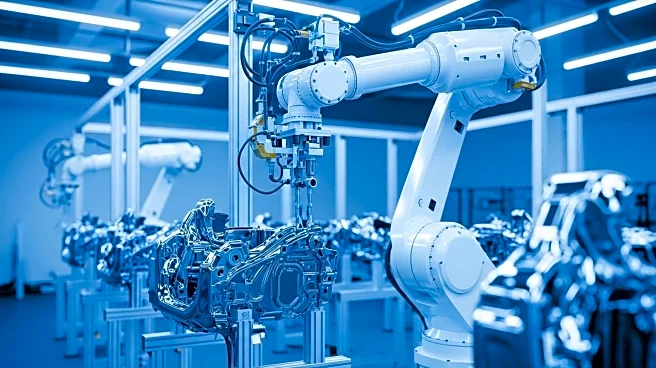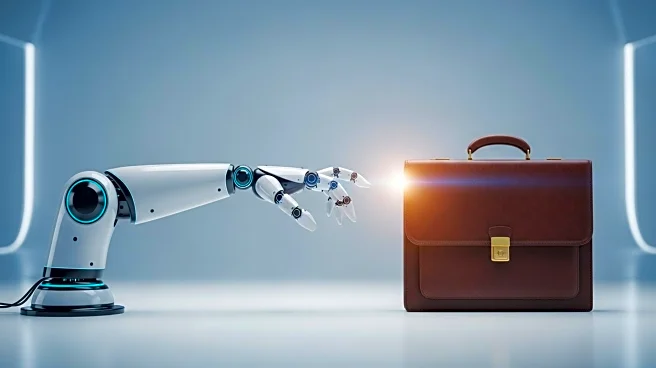What's Happening?
The Society for Human Resource Management (SHRM) is addressing the growing concerns over the U.S. talent pipeline, which is increasingly seen as inadequate for preparing students for future careers. According
to SHRM, the current educational and training systems are focused on outdated job roles, leading to a potential crisis in workforce readiness. The organization emphasizes the need for a shift towards skills-based education and continuous reskilling, especially in light of the transformative impact of artificial intelligence on the job market. SHRM is promoting initiatives such as the Youth Workforce Readiness Act and the Connecting Small Businesses with Career and Technical Education Graduates Act to modernize the talent pipeline. The E² (Education-to-Employment) initiative is a key part of SHRM's strategy, aiming to connect HR leaders, educators, and policymakers to develop practical and scalable solutions.
Why It's Important?
The inadequacy of the current talent pipeline poses significant risks to the U.S. economy, including weakened companies, reduced competitiveness, and increased social costs. As the job market evolves, particularly with advancements in technology, the need for a workforce equipped with relevant skills becomes critical. By focusing on skills rather than traditional degrees, SHRM's initiatives aim to lower barriers to entry for new jobs and careers, potentially revitalizing the U.S. economy. The involvement of HR professionals is crucial, as they possess insights into the entire employee journey, ensuring that solutions are both practical and scalable. Addressing these workforce challenges is essential to maintaining the U.S.'s position as a global leader in innovation and economic strength.
What's Next?
SHRM's initiatives require collaboration across various sectors, including education, business, and government. Schools are encouraged to integrate career-ready skills into their curricula, while employers are urged to expand internships and apprenticeships. Policy changes, such as the reauthorization of the Workforce Innovation and Opportunity Act (WIOA), are necessary to support these efforts. State and local leaders are expected to tailor strategies to their specific industries and communities, ensuring that solutions are effective and relevant. The success of these initiatives will depend on the willingness of all stakeholders to embrace change and invest in the future workforce.
Beyond the Headlines
The shift towards a skills-based education model could have long-term implications for the U.S. educational system, potentially altering the value placed on traditional degrees. This change may also influence hiring practices, with employers prioritizing adaptability and skills over formal education credentials. As artificial intelligence continues to reshape industries, the demand for continuous learning and reskilling will likely increase, impacting how individuals approach career development. These developments could lead to a more dynamic and inclusive workforce, with opportunities for individuals from diverse backgrounds to succeed in emerging fields.











